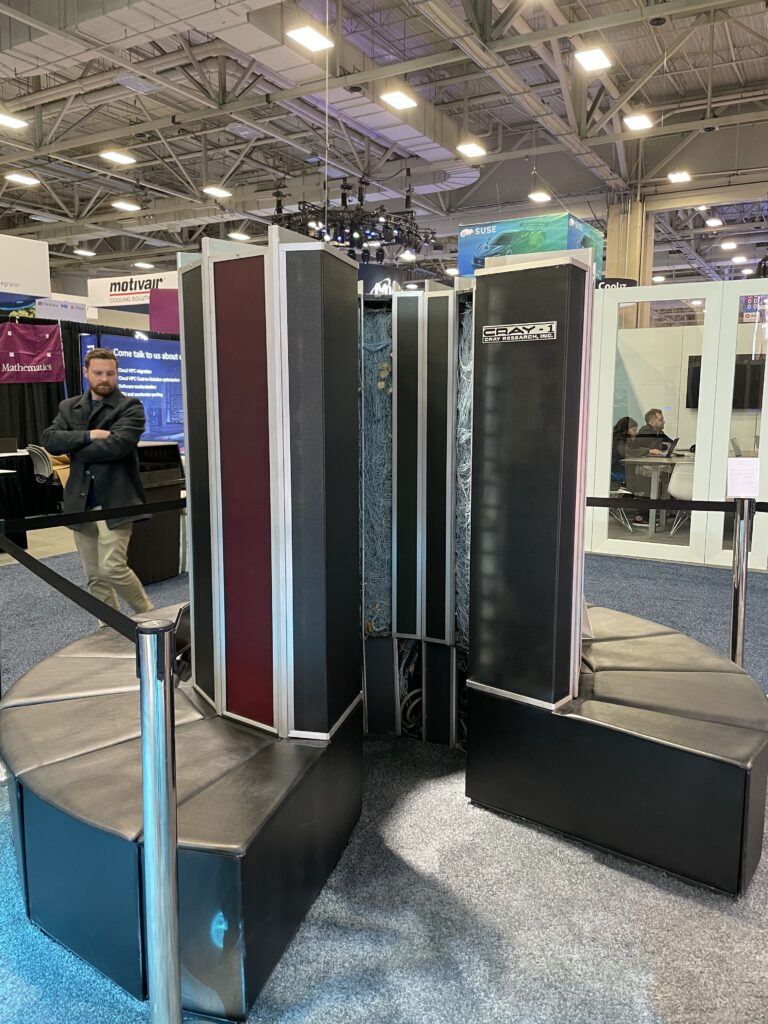
Source – HPE
HPE delivers the world’s fastest, energy-efficient supercomputers at SC22
- According to the November 2022 Top500 ranking, HPE’s Frontier continues to be the fastest exascale supercomputer in the world.
- HPE also built seven of the world’s top ten most energy-efficient supercomputers.
The computers that we use today are powerful enough to handle complicated tasks. Despite their enormous potential, they still need to work on tackling demanding tasks that call for a lot of processing power, which is why supercomputers are made. Global innovation, industry competitiveness, and economic expansion all depend on supercomputing. At Supercomputing 2022 (SC22), the latest supercomputing announcements by significant industry players demonstrate the field’s expanding influence on various industries.
Nvidia Corp., for instance, announced the introduction of new high-performance computing solutions for scientists. At the same time, an AI supercomputer with a 1 quintillion operations per second capacity was revealed by Cerebras Systems Inc.
In addition, Hewlett Packard Enterprise showed ongoing leadership through developing industry-leading supercomputers known for advancing performance breakthroughs, energy efficiency, scientific advancement, and AI innovation.
HPE has announced that offering its supercomputers in a more affordable form factor and at a lower price point will enable more businesses to access information, find solutions to issues, and innovate more quickly. The brand-new HPE Cray EX and HPE Cray XD supercomputers are part of its widened product line.
What HPE’s announcements SC22 mean for the supercomputer industry
What does this mean for the global supercomputer market? According to the “Supercomputers Global Market Report 2022”, the global supercomputer industry is anticipated to increase at a compound annual growth rate (CAGR) of 22.5% from $8.55 billion in 2021 to $10.47 billion in 2022. At a CAGR of 19.1%, the supercomputer market is anticipated to reach $21.07 billion in 2026.
In the latest Top500 ranking of the most powerful supercomputers, HPE delivered three of the top 10 fastest supercomputers, along with 100 other systems. These include LUMI from CSC, the third-fastest supercomputer in the world and the fastest in Europe, as well as Frontier from Oak Ridge National Laboratory and Perlmutter from Lawrence Berkeley National Laboratory, the eighth-fastest supercomputer in the world.
HPE also delivered LANTA at the National Science and Technology Development Agency (NSTDA), the most powerful supercomputer in Thailand and Southeast Asia, and Setonix at the Pawsey Supercomputing Centre, the most powerful supercomputer in Australia.
Based on the Top500 rating, Frontier is leading the race to exascale, and it will take a lot of effort and innovation to get the top spot.

HPE’s supercomputer presented at SC22. (Source – HPE)
One of Frontier’s many distinctive features is that it will significantly impact critical areas, including medication discovery, renewable energy, new materials for safer and more sustainable products, cancer and disease diagnostics and prognosis, and drug discovery.
Interestingly, Frontier is a ground-breaking system that was envisioned by technologists, scientists, and researchers to unleash a new level of capability for delivering open science, AI, and other innovations that will benefit humanity.
HPE empowering energy-efficient supercomputers
Some might think that supercomputing and energy efficiency don’t go hand in hand. After all, many of these machines need more than a megawatt of electricity to run, and the annual cost of electricity might reach millions of dollars.
However, the new generation of supercomputers is helping organizations be kinder to the environment because they provide impressive performance per watt. They are also being used to create the next generation of fuel-efficient products and solutions to help lessen the severity of climate change.
In light of this, HPE built seven of the world’s top ten most energy-efficient supercomputers, including the Dardel supercomputer from KTH Royal Institute of Technology, the Frontier and Frontier TDS supercomputers from GENCI-CINES, Adastra, LUMI, Perlmutter, and Setonix, and Champollion, an artificial intelligence supercomputer that combines HPE’s supercomputing technologies with the HPE Machine Learning Development Environment, a platform designed specifically for machine learning to build larger AI models, faster.
READ MORE
- Safer Automation: How Sophic and Firmus Succeeded in Malaysia with MDEC’s Support
- Privilege granted, not gained: Intelligent authorization for enhanced infrastructure productivity
- Low-Code produces the Proof-of-Possibilities
- New Wearables Enable Staff to Work Faster and Safer
- Experts weigh in on Oracle’s departure from adland


